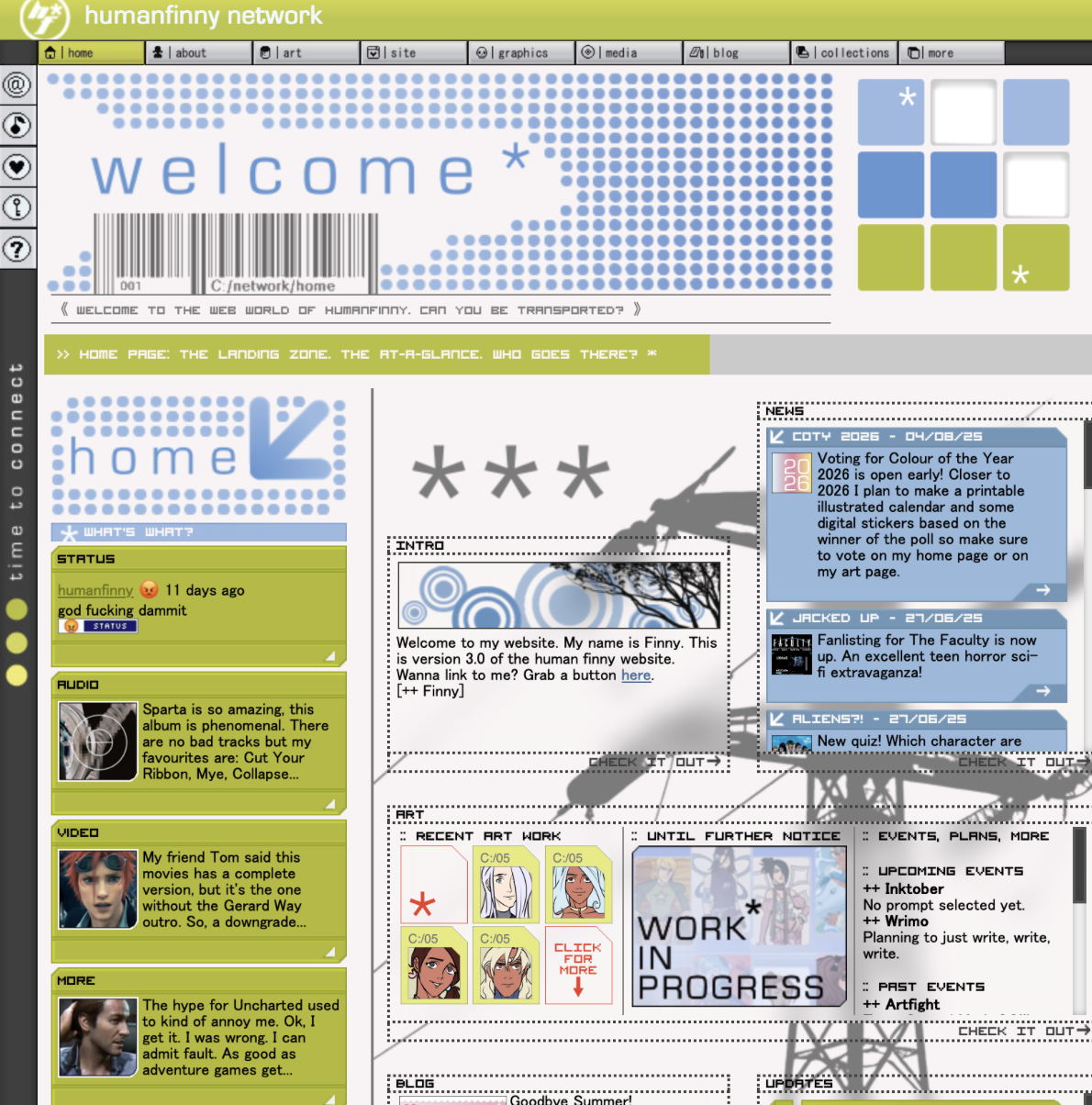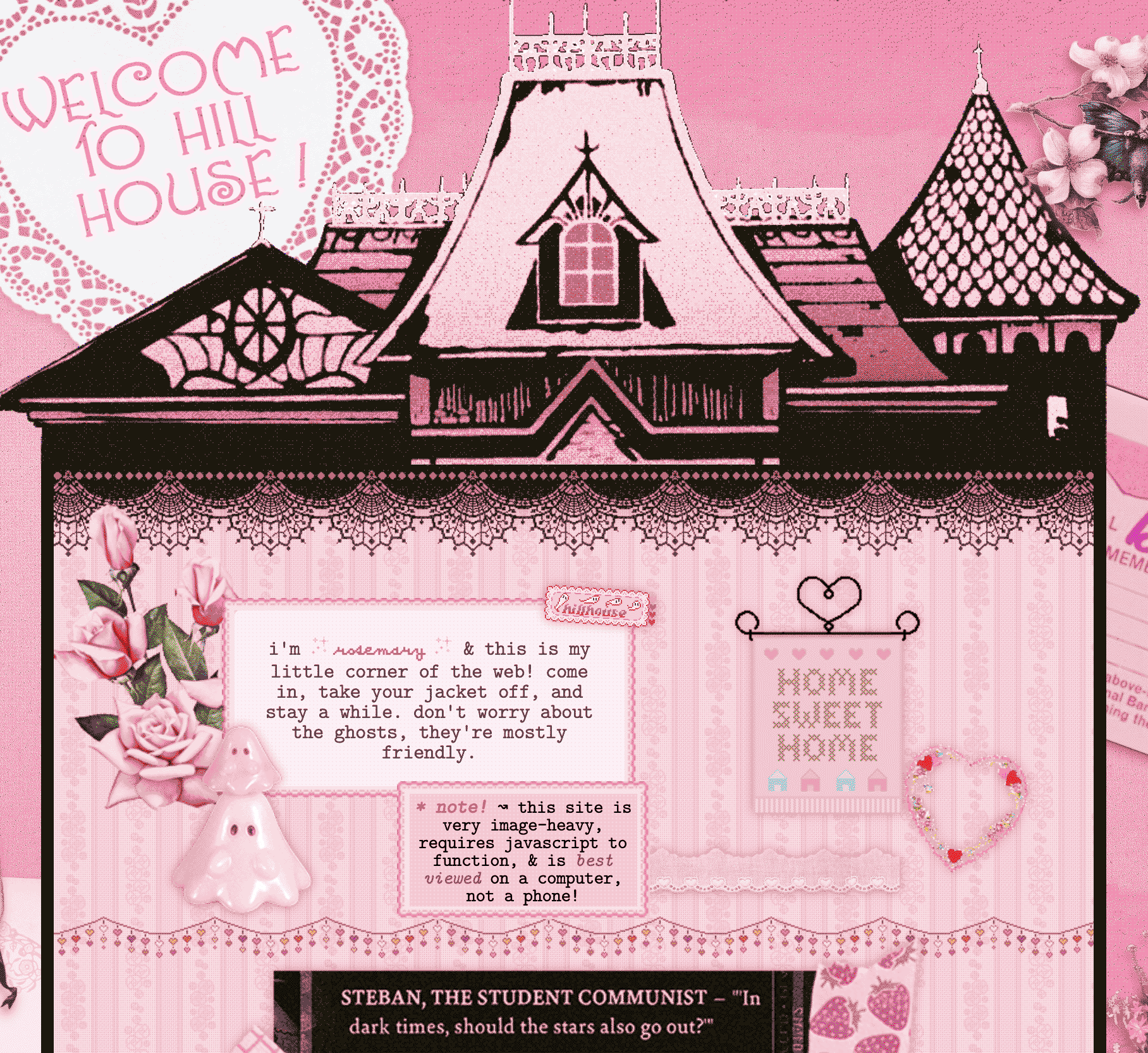🌼🌼🌼
One of the first things I noticed when reading this text about digital gardening, is the use of language from physical spaces being adopted to understand the internet (gardening, parks, farmland, monumental arch). The context was that the author was giving some background on how the term digital gardening first came about in 1998. It stood out to me because it shows how back then when the internet was still "wild", there was no preconceived norms on how to guide the user experience of the internet user. This felt like such a stark contrast to the algorithmic curation of social media today and how the "uncharted territories" of the internet have been lost over time. In a way it feels like being so focused on organizing the internet early on may have distracted from also preserving some of the randomness. Hence, the rise of the concept of digital gardening makes sense as a way to revive these patches of the old internet.
"These creators wanted to enable pick-your-own-path experiences, while also providing enough signposts that people didn’t feel lost in their new, strange medium."
Back when the users of the internet had more autonomy, it was more common to customize your own websites and specifically the way information was categorized and presented. This is one of the biggest selling points of a digital garden, unlike most premade platforms you can organize the content in a way that isn't chronological or fixed. This made me notice how the creators also being the users of the internet, as opposed to companies trying to make profit, ended up prioritizing the experience of other internet users. The intentions seemed a lot less sinister than it may feel today for example.
"The early web debates around this became known as The Navigation Problem – the issue of how to give web users just enough guidance to freely explore the web, without forcing them into pre-defined browsing experiences."
This quote also relates to the previous one in terms of how the focus was on the users. What interested me here was specifically the use of "pre-defined browsing experiences" because of how similar it sounds to what we have on the internet today, despite it being what the creators wanted to avoid. With the way social media algorithms work they feed you more similar content to what you already engage with to keep you online longer rather than nurturing a diverse browsing experience. It clearly shows how much everything changed when big corporations became involved with the internet and focused on profiting off of the users instead of serving them.
"The garden helps us move away from time-bound streams and into contextual knowledge spaces."
I didn't fully consider prior to reading this text just how chronologically everything is fed to the user online. Maybe because by the time I was old enough to get internet and social media on my phone, that had already become the norm. I found that this purpose for having a digital garden is especially important as on social media the content is fed out of context by also limiting what can be uploaded (either by how many minutes/seconds it can be or then characters). Combined with shortening attention spans and the algorithm prioritizing negative reactions from users, it feels like context and a slower pacing is something that is missing from the internet at the moment. It would be ideal if it was built into the architecture of the internet via limitations, but until then a digital garden is a good option.
"One of the best ways to do this is through Bi-Directional Links – links that make both the destination page and the source page visible to the reader. This makes it easy to move between related content."
This quote reminded me of the researcher who was involved in the creator of the internet (from the documentary we watched on internet archives). I can't remember exactly, but he was arguing that the model he saw as best for the internet is one where the website the user is on also links to the source material which is shown on the screen simultaneously.
"Gardens are imperfect by design. They don’t hide their rough edges or claim to be a permanent source of truth."
I liked this idea of imperfectness and especially how the digital garden is to grow and evolve with the ideas of the creator. It is refreshing compared to the curated ready to publish standards other platforms may have. I feel like that is a healthier approach to being on the internet. It even reminds me of how I approached doing my previous learning portfolio.
🌼🌼🌼
I noticed that when defining a website the author focuses on the endless possibilities and how many forms it can take. It makes sense but isn't as intuitive anymore because now there's more ideas on what a website should be (which is often controlled by big corporations who prioritize profit. This made me think just how much these expectations and corporations shrink our imagination when it comes to making websites→ you have more rigid ideas of what a website is due to being more of a consumer than a creator
"Can constant updates and redesigns of websites erase parts of digital history? And if they do is this simply a feature and "the beauty of a website" as the author says, or should there be developed better ways to archive different website versions. Especially now when there's more lost media"
This reminds me of Marion Stokes who recorded TV 24h a day for 30 years to preserve some of that history. makes me wonder, with how we're in the age of information overload, should we just accept that internet history will be lost or should the recording of most of that history be a built in mechanism of the internet? On one hand there's things even posted by politicians and certain messagings in advertising that would be good to keep to make sure those parts aren't rewritten overtime. But monitoring and recording everything may be a breach of privacy (even though corporations are already doing that by collecting user data).
insert smth here from notes --------------------------------------------------------------------------------------------------------------
Tee nettisivu, jossa on yksinkertainen interaktiivinen fraktaalikuvio. Jokaisessa klikkauksessa fraktaaliin tulee lisää yksityiskohtia. Lähtökohtana olisi gridi jota koodataan muuttumaan fraktaaliksi (tämä edellyttää vähän javascriptiä).

----------------------------------------------------------------------------------------------------------------------------------------------------------------------
Penelope Umbrico’s 2002 All the Catalogs (A-Z) was a really interesting piece, because it condensed the internet into an organism like form, where each broken link almost seems like the death of a cell, and eventually with all the links becoming black the whole website is dead. Whether the internet is alive is a question the article opened up with, which I haven’t previously considered before, but I think this example really highlighted how this a really interesting question to ask. If it is alive then what makes it alive, its functioning or the people using it? Probably both. It is people afterall who create the links and most of the content on the internet.
David Rokeby’s The Giver of Names 1990 closely reminded me of an exhibition I saw at Amos Rex. In this an installation where twelve characters and objects from different realities speak in an abstract language. The viewer is invited to watch them in a panel-like discussion as an unknown character translates the random sounds and languages into English, but even translated everything sounds like a lot of roundabout speech and vagueness that doesn't mean anything. Watching the panel’s interactions it felt like a critique to communication especially in political meetings and in media, and how this can create imbalances or no progress. In a way this exhibition was also digital poetry, somehow the gibberish gained meaning from the lack of meaning or understandability.

